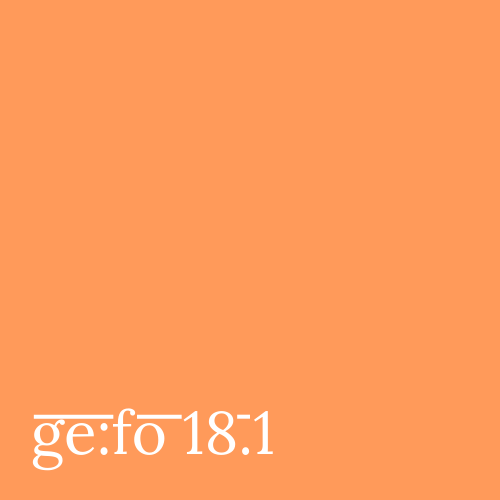Frontmatter and Editorial
DOI:
https://doi.org/10.18716/ojs/gefo/2019.2488Abstract
In lieu of an abstract, here is the first paragraph of the editorial:
The question of “What even is the Anthropocene?” is oddly open and self-deferring, which is even further complicated yet significantly expanded by a cultural tendency to neologize around the -cene: Capitalocene, Plantationocene, Chtuhlucene (Haraway), Anthrobscene (Parikka), Mediocene (Engell and Siegert), Black Anthropocene(s) (Yusoff), just to mention a few. New feminist materialisms are emerging at a time in need for alternative visions of the world threatened by human exceptionalism, ecological terror(ism), and devastating, extinction-fostering capital flows: they pose the question of how to theorize and practice ethical and decidedly posthuman and non-anthropocentric feminisms in the geological era of the (late capitalist) Anthropocene. What is at stake here, is a new awareness of the ontological relationality of always-already non-individual bodies and the potential for entangled agencies in an age of looming planetary crisis; what Joanna Zylinska theorizes as a minimal ethics of distributing rather than rehumanizing responsibility (also see Pulsifer’s article in this issue). This is directly linked to shedding light on the affectivity of matter and varieties of nonhuman agents/actants, to use Latourian terms, in processes of gendering and racialization, or the emergence of the body and social bodies as affective human-nonhuman assemblages: this can be the starting point for new –isms, as well as new politics of feminist intervention, calling attention to a shared yet stratified nonhuman condition and Anthropocene.



